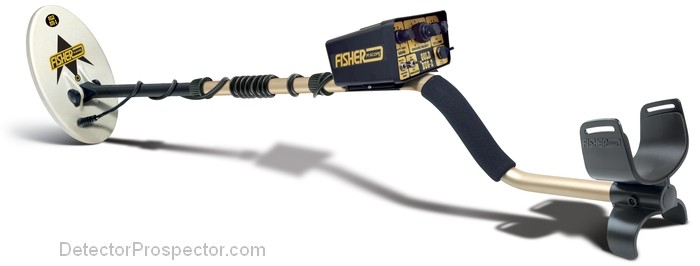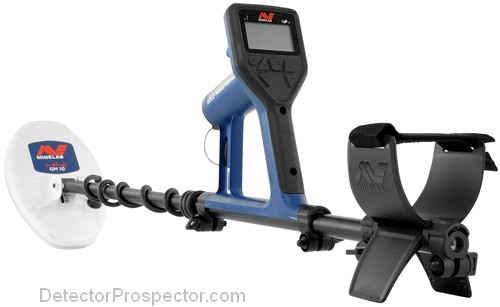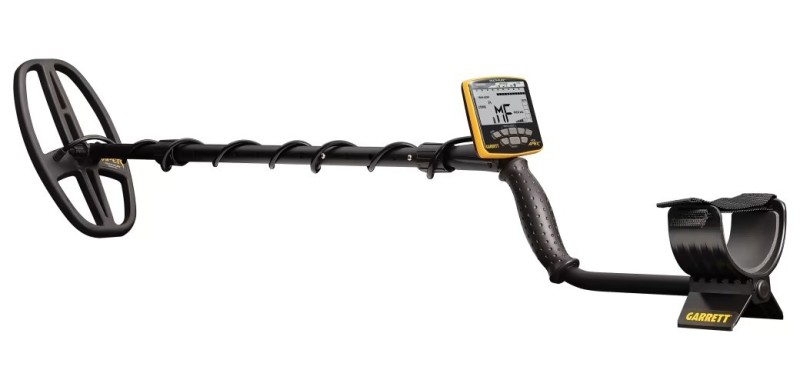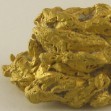Search the Community
Showing results for tags 'detector tech'.
-

Do Fertilizers Affect Performance?
Digalicious posted a topic in Metal Detector Advice & Comparisons
I wasn't sure what forum to post this in. Anyway, I found out that synthetic fertilizers contain not only salt, but metals. Can fertilizer contain enough salt and metals to affect ground balancing and/or performance? -
Quest has acquired a company called Air Metal Detectors, Quest is going to be coming out with another detector that is completely wireless which will utilize your Cell phone as the control pod, scuttle butt from Facebook, Quest also is showing this wireless detector at some metal detecting event in Europe, it will be called Quest Air and by the looks of it will be quite lite hey who doesn't carry a so called smart phone on them any more LOL just thought I would share on DP and yes I have to much time on my hands rite now as we have snow setting on the ground in Oracle AZ so I am just sitting here reading LOL
-
I've been wondering about this for quite a while and finally got around to looking into it. Let's start with the answer before proceding to the rant. 😏 From Wikipedia: Magnetometers can be used as metal detectors: they can detect only magnetic (ferrous) metals,... Note in particular "only magnetic (ferrous) metals". I can't remember the number of times I've seen people (particularly on TV shows) say that magnetometers detect gold. Well, maybe if it's in an iron/steel box. Most shipwrecks, even the old (16th-18th Century) ones contain iron/steel in moderately large quantities so getting an anomalous signal on a magnetometer could indicate a shipwreck. It doesn't indicate precious metals. Similarly for mineral exploration -- if a ferromagnetic mineral is associated with a desired metal/mineral then a magnetometer can give an indication of a spot that more investigation is warranted.
-
This topic seems to come up about everytime a new detector is released. E.g. "did I get a lemon?" I don't recall much more than ridicule responses although maybe I missed something. Reality leads me to a common question I ask (myself, but also you) and will continue to do so until I'm booted from this site 😁: "How do you know?" This question relates to Quality Control (QC) which is (hopefully) done by manufacturers at the component level and at the final (macro) product level. I know almost nothing about digital electronics and just enough about analog to qualify for the old "a little knowledge is a dangerous thing." But I think back when detectors were purely analog the individual unit consistency was a bigger deal, possibly getting more attention. The components (capacitors, resistors, inductors) for sure had rather wide tolerance ranges back then and many were sensitive to temperature differences. I think there was more use of adjustable components (e.g. variable resistors) to fine tune an individual unit before shipping. (Of course I could be wrong on that....) I recall stories here about the coil QC at White's and the extremes their coils (prior to selection at the facility) could exhibit. And I think this continued there into the digital detector age. So what about today? There still are some analog components of the design but I think that's held to it's basic minimum, now letting the digital back end do the heavy lifting. And we've all seen the results in terms of useful features. (More raw depth? Well apparently not much if at all, but more usable/meaningful depth -- definitely.) I also think modern analog components have much tighter tolerances than typical from the old days. Voltage regulation is another area of improvement, I think, and there likely are many others. But with all those improvements, what's the bottom line? Time for a thought experiment. I go to Gerry's place and get 100 brand new 'identical' detectors. (I know he has that many Manticores sitting there, getting a laugh out of it watching us on his waiting list. 😄) Stay in factory presets, ground balance to the same channel on all, set to the same gain, etc. (and keep them far enough separated that they don't interfere with each other). Each one is subjected to the same test target with some consistent specification as to max distance ('depth') that is detectable. What is the spread in those distances? IDK. Do you? I (and probably you) would like to think that something similar, maybe even more rigorous, is done at the factory for every unit prior to release. I have a feeling that is extremely naive. Often in QC, spot checking is used but do they even do that? When I see the sloppy glue job that phrunt showed a couple weeks back I don't get a warm fuzzy that the Manticore (for example) is getting sufficient attention post assembly. (It's just cosmetic right? What's the big deal? No really....????) Would it be feasible for detectorists like we here to actually create a reliable/repeatable (at a distance) test whose shared results would be meaningful? One thing I'm pretty sure of is that it would be difficult to match that key 'yes/no' decision on where the signal disappears with target distance. For sure you can't depend upon everyone's hearing!! I thought about using the disappearing VDI as an indicator, and maybe that would work for some detectors (Deus 2?) but it wouldn't work for *my* Equinox, for example. Then there's the dreaded and variable EMI degradation of signal.... Uniform test target? People following instructions to a tee?? Starting to look tough and maybe that's why we're left wondering. Anyone else (who's read this far) think of a solution?
-
I recently sent one of my White's detectors to Centreville Electronics for repair. It is a TDI BeachHunter which has a waterproof case but condensation built up in the control box during a hunt in the cold rain and surf this past month and it stopped working. I believe that if I had taken the time to waterproof the circuit board in my TDIBH that I could have avoided the failure of the detector despite the condensation problem. I have been reading up on PCB waterproofing and have found out that it seems to be a growing practice in many do-it-yourself hobby applications such as waterproofing drone controls for wet weather use. There are several specialized products available but even a simple coating of nail polish was mentioned in a number of articles as being a cost effective method. Has anyone here tried this? It seems like cheap enough insurance to minimize the risk of damage to a detector if it gets dropped in the water, splashed on, spilled on or rained on. I am considering using the product in the attached picture.
-
I was doing a search between or VLF detectors prices are much cheaper. Now when it comes to the device PULSE INDUCTION GPZ 7000 or ULTRA-PULSE AXIOM GARRETT. These PULSE INDUCTION devices they do more object discrimination, they penetrate deeper into mineralized ground or they are quieter than VLF detectors. Is it still worth buying a professional PULSE INDUCTION device in 2023? Why don't they manufacture a device like Makro GOLD KRUZER, Fisher Gold Bug Pro, GOLD MONSTER 1000 with PULSE INDUCTION. I'm using Google translator, maybe some word has some error.
-
Hello. I don't plan on purchasing a Manticore, but I still like to learn about the new detectors. With that said, I have two questions about the Manti: 1) Isn't Tr power regulated, and haven't detectors reached the maximum allowed power output a long time ago? If so, what does the Manti's "More power" even mean? Could it be that it doesn't transmit any more than the regulated power at any given time, but rather, each sequential frequency pulse is transmitted at full power? For example, in a SMF mode, both or more frequencies are all transmitted at full power, instead of 1 or more of those frequencies transmitted at low power? 2) If you own a Manti, what sensitivity level can you usually run at without noise, and how often are you able to get even close to 35?
-
Hello. What kind of time frame are we looking at before component degradation causes performance issues, and what kind of issues would they be? Sensitivity loss? Choppy audio? I guess it would be hard to give a time frame due to many conditions, but I would think the old analog detectors have a lot more components such as resistors and capacitors that could degrade, compared to more chip based digital detectors.
-
The mod I did like on the Gold Bug 2 was Gary Hudson's sensitivity modification, unfortunately though I lost contact with Gary years ago and this modified one needs fixed. I do not have the paper work either or I would try to fix it. Gerry McMullen had one when we went detecting together about 20 years ago and he did really good with it, so I finally broke down and got one. Anyone remember what all the switches did?
-
There is an outstanding article in the December 2016 issue of ICMJ’s Prospecting and Mining Journal entitled “ Detecting Strategies for Heavily Forested Areas”. I do not intend to republished the article here without permission. Steve H. or Reno Chris may decide otherwise. What I want to get across is pointed directly at all the detector manufacturers’ engineers and R&D Departments. There is a segment of prospectors in the California Mother Lode gold belt, throughout the Rocky Mountains and elsewhere that you have overlooked with both the ML GPX 6000 and Garrett Axiom. With the old technology of the White TDI, Garrett ATX and ML SDC 2300 slipping down slope there is a glaring price gap that can be filled by a mid range priced “Pulse Induction” metal detector equipped with a waterproof elliptical both Double D & mono search coil. After reading this article if you still think you can wait us out, you are wrong. I served with a lot of marines from Texas, folks referred to us as “jarheads” not hammerheads, get it done.
-
Are all losers in the 21st century. Why are prospectors stuck with large bulky tip over devices when we know at this point the manufacturers can do better? Why have this? When we could now have something like this? 2.5 lbs, built in wireless headphone capability, fully rechargeable and runs for days on a single charge, completely dirt and water sealed, good range of coils at a decent price. The closest you can get to this is a Gold Bug Pro, which honestly is not half bad, but it's not as good at hitting gold as the other three up top, and the control box is still three times larger than the one at bottom. So how about it manufacturers, anyone interested in building a genuine 21st century VLF nugget hunter instead of continuing to sell us old boxes that really are so last century as to be sort of embarrassing at this point?
-
My last trip to the desert was to an area where we are treated with many hot rocks. I've dealt with them each time I go to the Mojave/Mohave Desert. We picked up a few so that my son could give them to his classmates. I brought 50 or so home and washed them and tested them with a magnet. To my surprise there is a great difference in attraction to a super magnet. Some give an indication of repulsion rather than attraction. So, what exactly is a HOT ROCK? This article gives me more information about hot rocks and metal detecting than I've ever read. It makes some of my personal observations about ground, hot rocks, gold and meteorites come together. Hot Rocks (metaldetectingworld.com)
-
There are some who argue that pure gold when in very large quantities is undetectable by metal detectors... please i would like to know if scientifically this theory can be valid. thanks.
-
Hello. It's my understanding that BBS and FBS have slow recovery, and therefore are not ideal in trashy sites compared to the newer detectors. As such, I have a couple of questions regarding that. 1) Does FBS and BBS have slow recovery due to the more robust frequency transmitting and receiving, or is it because they have slow processors compared to modern detectors? Or is it a combination of both? 2) With BBS or FBS, could a user match the separation performance of modern detectors by slowing their swing speed to a crawl? Thanks for reading this. I'm looking forward to the replies 🙂
-
Google failed me in my quest for an answer. Modern metal detectors are obviously based on some microchip(s) to be able to do all that they do. So I was wondering what chipset they use and what type of language do they use to make the detector do what it does. I am guessing that this may be confidential company information in some or even many cases and I am not asking anyone to break any laws. I am assuming other than the D2A and A2D chips/circuits it is probably mostly like any other programming language like C++. I know there are some very talented members on this forum who can dive very deep into the weeds in terms of modern metal detector designs.
-
Hello. I didn't see a general detector talk forum, so I hope this forum is ok for this topic. I own 3 detectors with emi noise reduction, and on all 3, it does little to nothing to reduce emi noise. I've also watched countless videos in which numerous types of smf detectors are very noisy due to emi, then a noise reduction is done, and as usual, it does diddly squat. They end up doing what we do, and reduce the sensitivity, or use a single frequency. SMF is so prone to emi because apparently, when the frequencies are combined and "added together", then emi noise from the various frequencies, is also added together and therefore the noise is exponentially increased. So, my question is: What exactly is technically occurring when you run a noise reduction? Does it filter out or reduce the sensitivity of the frequencies that are receiving noise? If so, why doesn't it work very well? Is it because if it worked well, then that filtering would significantly diminish the benefits of smf? Also, is it possible that if a particular detectors noise reduction works significantly better than a different detector, then it's because the noise reduction was achieved by reducing the "hidden" fundamental sensitivy? If so, that means you wouldn't see the sensitivity drop, but you would indeed lose sensitivity. So what's up with all that?
-
Full disclosure here, I'm a data junkie, but whenever I see reference to hot ground I wonder if anyone has ever put together a simple method of measuring hotness? I guess that would be in WA if anywhere? I realize that there's many factors involved as Minelab's great introduction below discusses. If you set aside salt beaches and wet clay and just consider dry-land detecting would the percentage of magnetite, or whatever a magnet picks up (ilmenite, maghemite) be a reasonable measure of hotness? If so, what percentages would constitute low mineralization thru hot mineralization ? https://www.minelab.com/__files/f/11043/KBA_METAL_DETECTOR_BASICS_&_THEORY.pdf
-
Hopefully I put this topic in the right place. This is always a good topic for discussion and has been discussed many times in past. Everyone always has great input and people really do extensive testing on the subject. So it is nice to hear everyone’s thoughts on recent testing techniques/thoughts. Funny this started on another thread, but it needs it’s dedicated place to not take away from the other threads main topic. Actually I was working on a PM then went back to the thread and said wow here come the responses oops should have started this thread first. Someone did mention BASELINE — I agree that sums it up in my opinion, but I do get tunnel vision at times. Don’t we all. I am not a 100 percent on air test as there are many variables in the real world/environment and most notably I do not detect coins/targets in air. This is just my thought process. Although in past I have done a bunch for curiosity. The data though is extremely valuable and worthy of documenting. I applaud/thankful to everyone that provides the information and truly think it helps people understand what a coil can possibly do. Notice I said possible. That real world thing can throw us all for a loop at times. My thing is get the coil/detectors out in the field on unknown targets that are in the ground and see if the different machines can pick up the target in that type of condition with its best settings. Of course it is never apples to apples, but we try. Like when the Karate Kid said ‘when do we get to break boards and he said boards don’t hit back’ well air doesn’t hit back like the ground. Had to poke a lil sick fun. Would like to hear everyone’s thoughts/opinions on what they think a proper air test is and what they are trying to get at vs what’s in the ground testing. Be respectful all points should be well taken. A little debate is good. Know a lot of people put a bunch of time into the testing, so it is great to see a transfer of knowledge. Note I have been offline for awhile dealing with health issues, so I am playing catch up on my readings. I have seen some neat testing setups since I jumped back online while playing catch up. Some are very elaborate in design it’s great seeing this. Gary — ‘The Pulse is Strong with this one”
-
This is probably one of the dumbest questions I'll ever ask. Is there any advantage of an old Analog detector like the original Gold Bug over a newer Digital model? Thanks!
-
Hi guys: I have been watching youtubes lately and I wonder if anyone had those GER detectors? I wonder why people not using this kind instead as it seems have more depth than our normal detectors such as minelab etc.? Obviously for sure its more expensive. or 3D imaging as well... such as these: https://orientdetectors.com/product-tag/okm/ Kind regards, Ethan
-
When user requests make operation a nightmare.
-
While browsing some of my archived files I found some service information for vintage Whites metal detectors, geiger counters and other instruments. Unfortunately I could not fine the source information so I can not give due credit to the source but these documents were originally produced by Whites Electronics. Because Whites is now closed I could not contact them for permission to publish. Steve H: if it is inappropriate for this information to be posted, please feel free to remove it. I thought this information might be useful for those who collect vintage Whites equipment and would like to have some service information. I suspect that, within limits, the information can be projected forward a few years too. Enjoy. 🙂 1946-1971 25 years of metal detector service.pdf add on 25 years.pdf
-
Maybe a stupid question but I do need an answer as I have been mostly nugget hunting and been away form coin hunting for many years. I may have an opportunity to hunt a part of Europe with great potential of finding some nice roman coins. If one was going to hunt coins, and jewelry would you bring a vlf detector or a pulse induction like lets say a sdc 2300 for more depth. I know all about vlf disc and benefits of p.i. in mineralized soils and all the stuff. What I an interested in is depth and not so much avoiding iron junk, I was thinking sdc because its compact and water proof. Does the sdc 2300 go deeper then lets say a Minelab 800 on a small coin ?






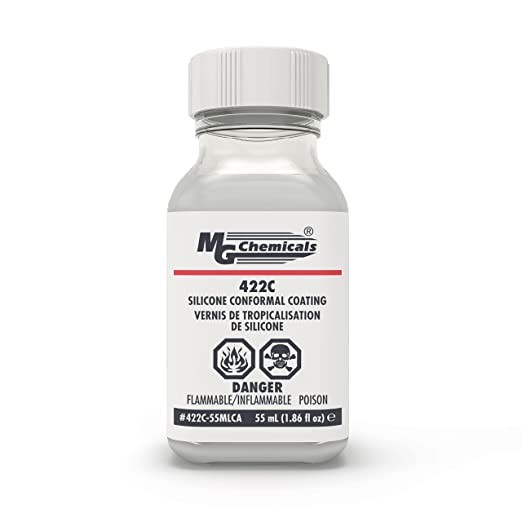

.thumb.jpeg.4e429bd0f2065464590808d8efa2ce6e.jpeg)

